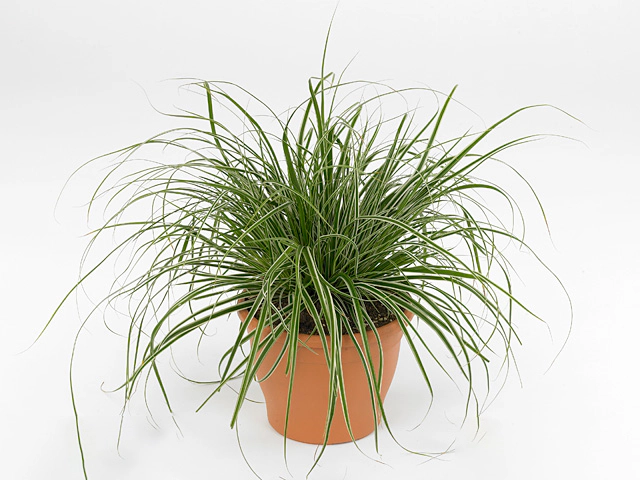Carex oshimensis Everest

| Leaf tip | Pointed/acute |
| Winter hardness | Good (USDA-zone 5, 6) |
| Soil fertility | No special demands |
| Leaf, general shape | Linear |
| Plant height | 20 - 30 cm |
| Leaf width | 0 - 1 cm |
| Leaf size | 15 - 20 cm |
| Light conditions | Shady; Sunny; Semi-shades |
| Leaf, main color | Dark green |
| Leaf colour, pattern | Bicolored |
| Leaf, secondary color(s) | White |
| Moisture requirements | Moist; Wet; Swamp |
| Soil type | Sandy; Humus rich; Peaty; Clayish; Sandy clay |
Introducing Carex oshimensis Everest, a versatile and visually striking sedge plant that is sure to enhance any garden or landscape. Known for its resilience and adaptability, this plant is well suited for USDA hardiness zones 5 and 6, making it an excellent choice for gardens in various climates.
One of the standout features of Carex oshimensis Everest is its pointed and acute leaf tips. This characteristic adds a touch of elegance to the plant and sets it apart from other varieties of sedges. Additionally, its winter hardiness is noteworthy, as it can withstand cold temperatures and continue to thrive during the colder months.
In terms of soil fertility, Carex oshimensis Everest does not have any special demands. It can grow in a variety of soil types, including sandy, clayish, and peaty soils. This versatility allows gardeners to incorporate the plant into different areas of their garden without worrying about specific soil conditions.
The leaves of Carex oshimensis Everest display a linear shape, with a width ranging from 0 to 1 cm and a size of 15 to 20 cm. The main color of the leaves is a dark green, which provides a visually appealing contrast against other plants in the garden. Additionally, the leaves exhibit a bicolored pattern, with the secondary color being white. This unique combination adds depth and visual interest to the plant.
When it comes to light conditions, Carex oshimensis Everest can thrive in a variety of situations. Whether placed in shady areas, sunny spots, or semi-shaded locations, this plant will flourish and add beauty to the space. It is important to note that the plant does best in moist or wet conditions, making it ideal for areas that receive regular rainfall or have access to a water source. It can even thrive in swampy conditions, making it a versatile choice for water gardens or bog areas.
Overall, Carex oshimensis Everest is a wonderful addition to any garden or landscape. Its adaptability, visually striking appearance, and low-maintenance nature make it an excellent choice for both experienced gardeners and beginners. Whether used as a border plant, ground cover, or focal point, Carex oshimensis Everest is sure to enhance the beauty of any outdoor space.
Market availability index by month:
| Jan. | Feb. | Mar. | Apr. | May | Jun. | Jul. | Aug. | Sep. | Oct. | Nov. | Dec. |
|---|---|---|---|---|---|---|---|---|---|---|---|
| 1 | 3 | 3 | 3 | 4 | 2 | 2 | 3 | 3 | 2 | 1 | 1 |